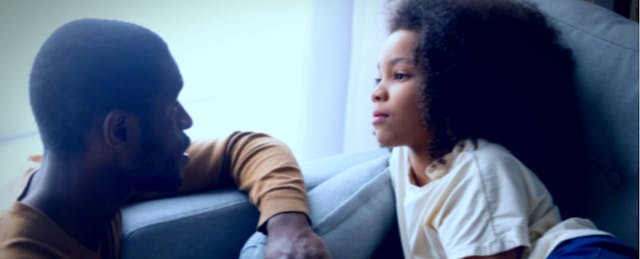Like nearly everyone else, children have experienced enormous disruption during the pandemic. Their schools closed months ago and, for many, remain closed. They stopped seeing friends and teachers on a regular basis, or had to get used to seeing them through a screen. Many of the things they love or look forward to have become unavailable or, at minimum, altered.
All of these changes are stressors. And they represent only the best of cases. In the worst, children may be in unsafe or unstable home environments, they may be housing or food insecure, their family members may have lost jobs or incomes and they may have seen or experienced increased violence.
This has led to heightened concerns about children’s mental health, a primary point of discussion during “Thrive: The Children’s Summit,” a live virtual event hosted on Tuesday by the Atlantic.
Though much has changed, there are strategies that parents and educators can use “to help mitigate the stress” and “protect children and help them feel safe,” said Dr. Jennifer Shroff Pendley, who is the chief psychologist at Nemours/Alfred I. duPont Hospital for Children and a professor of pediatrics at Sidney Kimmel Medical College.
It’s important to note that the pandemic has affected children and families in different ways, based on geography, race, socioeconomic status, disabilities and a host of other factors. Some children will naturally experience more stress and anxiety around COVID-19 than others, Pendley noted.
“For children with a lot of anxiety, we can provide reassurance without negating their feelings. But don’t assume what they are feeling. Ask them. Ask if they are OK. Know that all emotions are all right,” she said.
If a child is doing really well, then great, Pendley said. But if they are mad or sad, don’t try to disqualify their feelings or tell them everything will be fine. In fact, it may be appropriate to share your own difficult emotions, such as by saying, “I’m scared, too,” or, “I am also angry.”
Be honest and transparent, said Jeanette Betancourt, the senior vice president of social impact at Sesame Workshop, the nonprofit behind Sesame Street. But also take into account the context this child is in. How old are they? For younger children, such as toddlers and preschoolers, you want to tell the truth in a way they can handle.
“One of the things we know is that to successfully parent, acknowledge you need to take care of yourself to help your children,” Betancourt said. “It’s a circle of care. You can’t do it alone.”
She added that a few ways parents can model resilience for their children is by establishing a sense of safety, following a routine and being flexible. Obviously, in a pandemic, all three of those goals can feel—or actually be—unattainable. But even small steps can be helpful, such as creating and sticking to a morning or dinnertime routine.
Kate Julian, a staff writer at the Atlantic who moderated the conversation, asked Pendley and Betancourt how the pandemic and social distancing were affecting the long-term development of young children.
Pendley responded: “I get asked a lot: ‘Is this going to impact our toddlers and preschoolers for life?’”
But a parent’s interactions with their own children are far more critical than the ones that happen with other adults and children in social settings, Pendley said. If parents can make time to play with their kids, or encourage key interactions among siblings—such as resolving conflict or learning to share—that would go a long way.
Pendley had a few other ideas for stimulating interaction: Grandparents can call in through FaceTime or Zoom and read a book out loud to their grandchildren before bed. Or two families can get their kids together for socially distanced outdoor play in a park or a backyard.
“You can create a lot of those interactions. But for parents … give yourself a break from that feeling you have to do everything perfectly. Every opportunity you have with your little one is an opportunity for their development and for you to help them grow.”
Children love to play and are inherently curious, Betancourt added. She suggested several other ways to ensure kids continue learning during this time. For one, kids can find new places and items to explore in their own homes. Or they can create “comfy, cozy spaces” where they can go to read books, play games or explore as a family.
Going outside is another great option, Betancourt said. Most people are reluctant to continue outdoor learning and exploration once the seasons change. She sees it differently. “What a wonderful way to explore rain and puddles and snow, as we get into the deeper fall and winter. Having those opportunities to explore our neighborhood and environment is such a wonderful way to extend children’s curiosity.”
And when you run out of ideas of activities to do with and for each other, Pendley suggested thinking of others nearby and doing something to make their day a little brighter. Research has shown it helps both parties.
“Doing acts of kindness has positive effects on us physiologically and psychologically,” she said. “What better way to be with your child than making cards for the neighbors or doing random acts of kindness around the neighborhood?”


